You are here
Federal Deficit and Debt: August 2021
Every month the U.S. Treasury releases data on the federal budget, including the current deficit. The following contains budget data for August 2021, which is the eleventh month of fiscal year (FY) 2021.
Current Federal Deficit
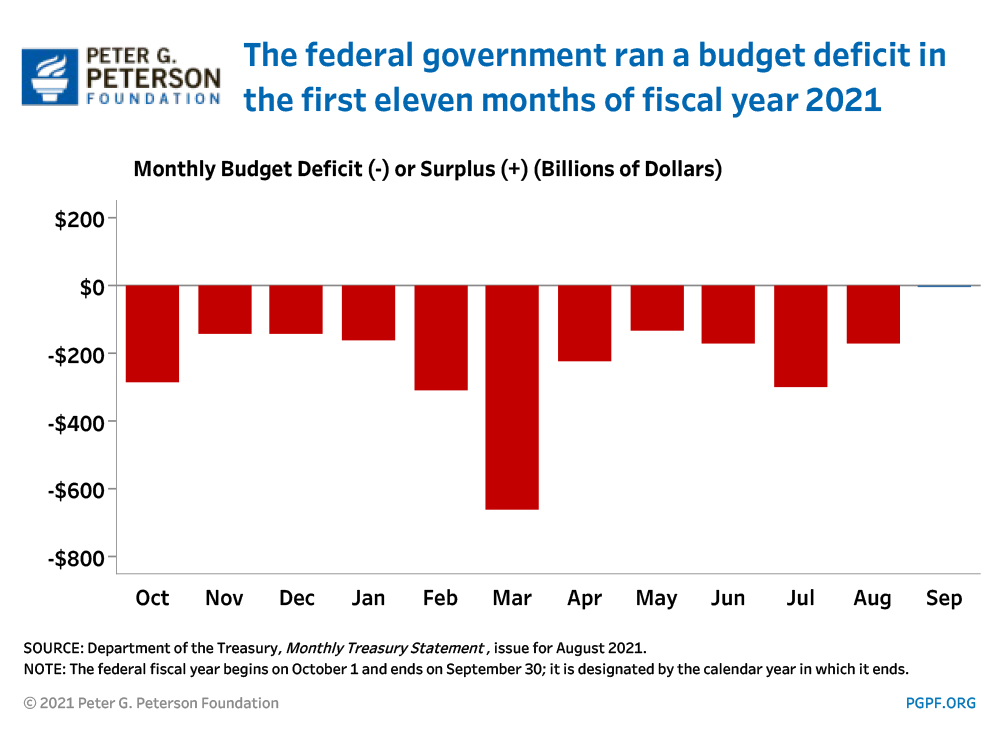
- Cumulative FY21 Deficit Through August 2021: $2,711 billion
- Cumulative Budget Deficit Over Same Period in FY20: $3,007 billion
The cumulative deficit for the first 11 months of FY21 was $297 billion smaller than it was through the same period in FY20. The decrease in the cumulative deficit reflects a growth in revenues this year of $540 billion, partially offset by a $243 billion increase in spending.
The substantial growth in revenues was driven by the general strength of the economy over the past year, which has led to increases in individual and corporate income tax receipts. The growth in outlays is primarily due to the programs and policies implemented in response to the pandemic.
Cumulative Federal Deficit
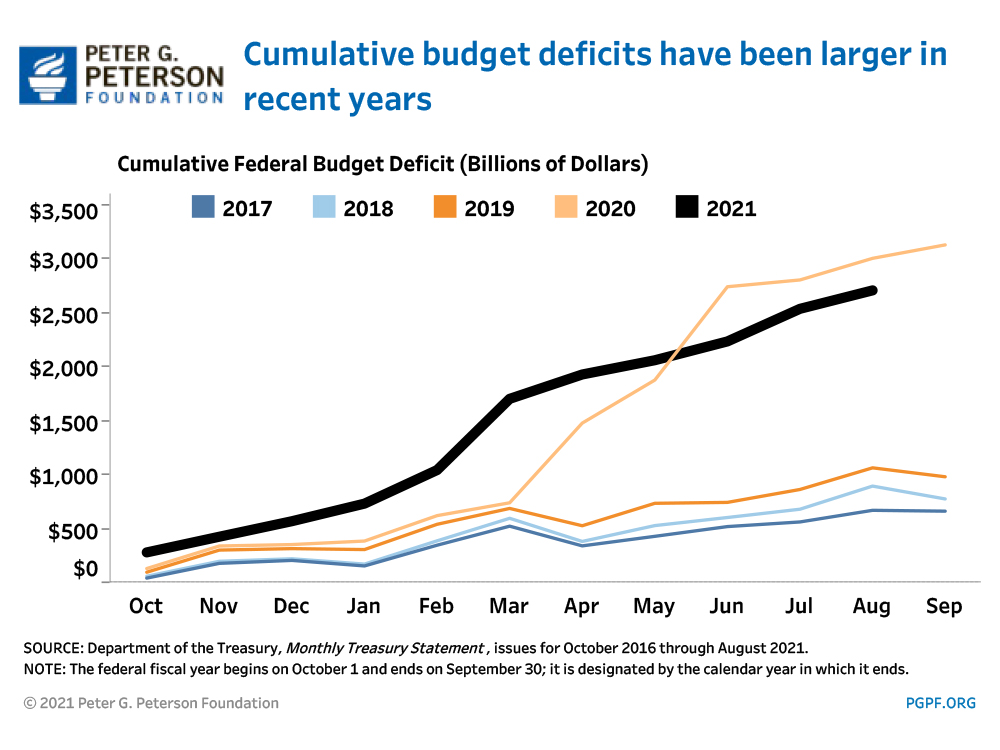
- Cumulative FY21 Deficit Through September 2021: $2,540 billion
- Cumulative Budget Deficit Over Same Period in FY20: $2,807 billion
The cumulative deficit for the first 10 months of FY21 was $267 billion smaller than it was through the same period in FY20. The decrease in the cumulative deficit reflects growth in revenues this year of $495 billion that was partially offset by a $227 billion increase in spending.
The substantial growth in revenues was driven by the general strength of the economy over the past year, which has led to increases in individual and corporate income tax receipts. Outlays also grew relative to last year, primarily as a result of the federal response to the pandemic, but by a smaller amount.
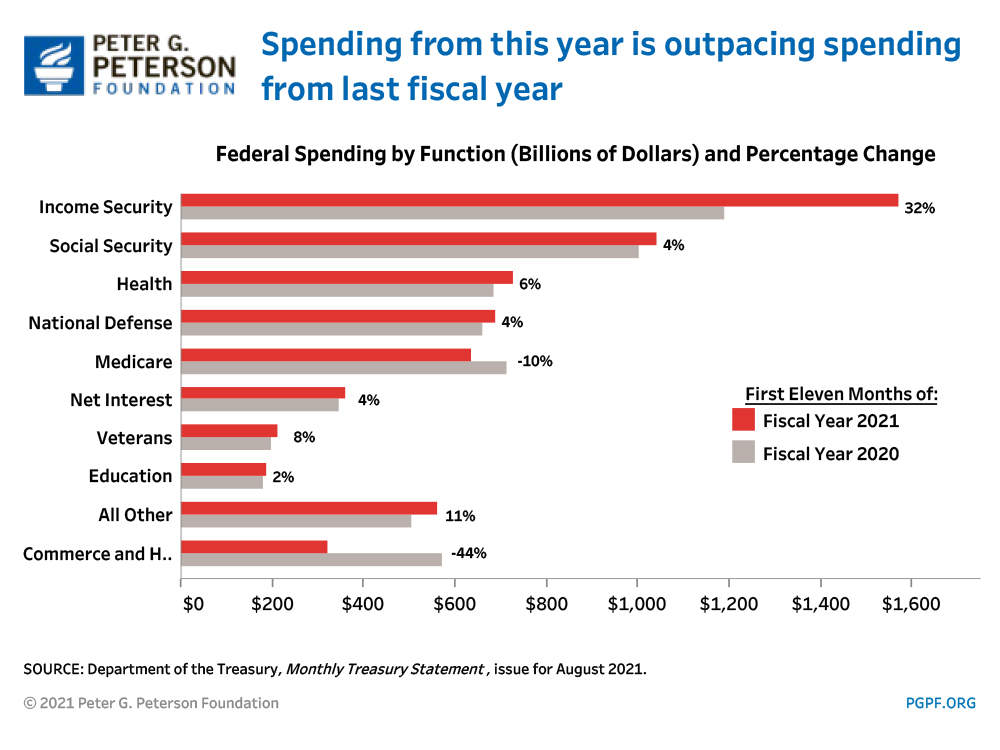
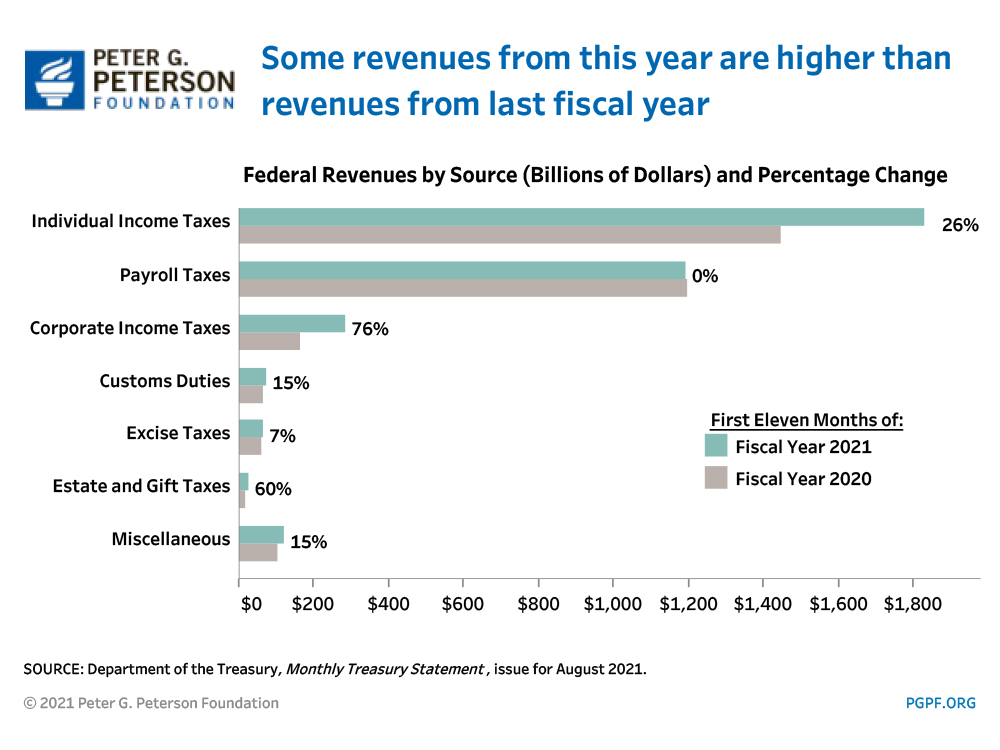
National Debt
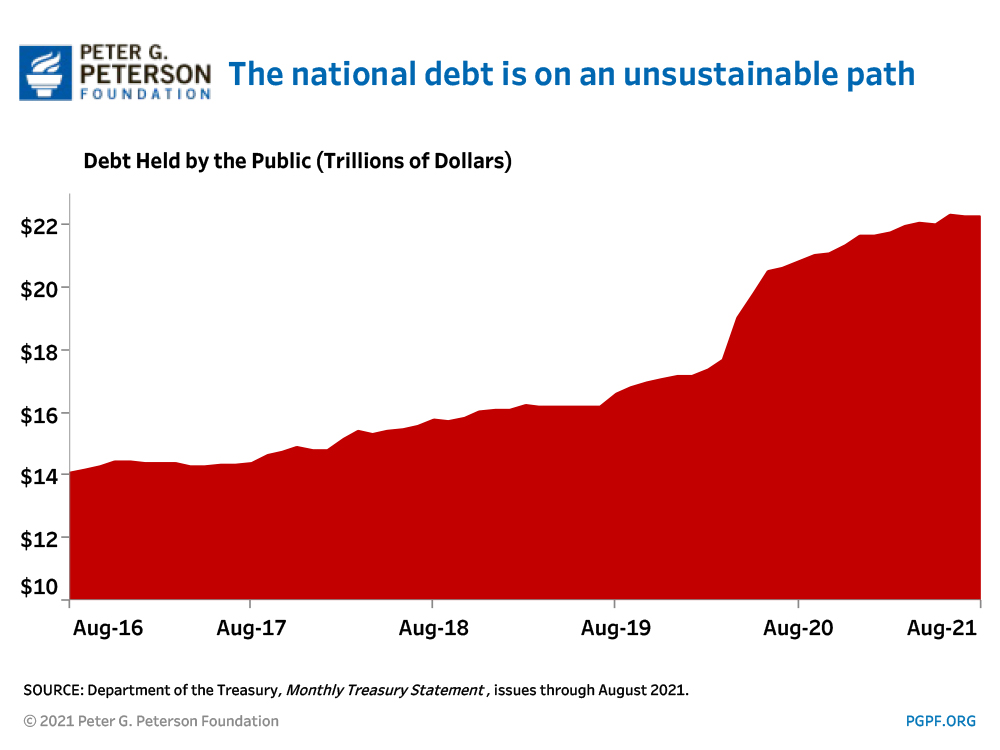
- Debt Held by the Public at the end of August 2021: $22.3 trillion
- Debt Held by the Public at the end of August 2020: $20.8 trillion
The sizeable deficit in FY20, and so far in FY21, has pushed up the current amount of debt held by the public by more than 25 percent relative to its level from before the onset of the COVID-19 pandemic. As the situation stabilizes, policymakers should turn their focus to the country’s underlying fiscal situation.
